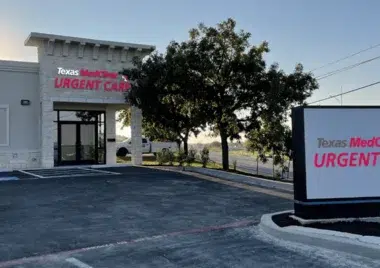How Our Clinic Ensures Top-Notch Urgent Look After Every Person
How Our Clinic Ensures Top-Notch Urgent Look After Every Person
Blog Article
Recognizing the Duty of Urgent Treatment in Providing Timely Therapy for Non-Life-Threatening Problems
Immediate care facilities have arised as an important part of the health care landscape, addressing the instant needs of individuals with non-life-threatening problems. Recognizing the subtleties of immediate care might significantly affect patient end results and the general performance of healthcare shipment.
What Is Urgent Treatment?
Urgent care describes a category of clinical solutions designed to address non-life-threatening conditions that call for prompt attention. These centers act as an intermediary in between main treatment physicians and emergency spaces, supplying a convenient alternative for patients who require punctual treatment without the extensive waiting times usually related to emergency situation divisions.
Immediate treatment facilities are typically staffed by doctor, consisting of doctors, registered nurse experts, and medical professional assistants, who are trained to diagnose and treat a broad selection of conditions. Common solutions supplied by these facilities consist of therapy for minor injuries, diseases, and infections, in addition to diagnostic tests such as X-rays and lab work.
Additionally, urgent care facilities often approve walk-in patients, getting rid of the demand for visits. On the whole, urgent treatment plays an important duty in the healthcare system, making sure people can access important clinical services quickly and successfully.

When to look for treatment at an immediate treatment center rather of a primary treatment physician or an emergency situation space,Many people might discover themselves uncertain concerning. Immediate treatment is created to address non-life-threatening problems that need prompt focus but are not serious enough to call for an emergency situation space check out.
Generally, one must consider urgent treatment for issues such as minor cracks, sprains, cuts calling for stitches, or infections like urinary tract infections. Furthermore, cool or flu signs, breakouts, and allergies can likewise be suitably managed in this setting.
It is necessary to note that immediate treatment is not ideal for dangerous emergency situations, such as upper body pain, problem breathing, or serious blood loss, which demand immediate emergency space treatment.
Individuals who lack access to a main treatment medical professional or can not secure a timely visit might likewise take advantage of immediate treatment services. Ultimately, comprehending when to use urgent care can cause extra efficient healthcare delivery, allowing patients to receive the appropriate level of care based on their particular health and wellness requirements.
Benefits of Urgent Care Centers
Choosing urgent care centers for non-life-threatening problems supplies numerous benefits that boost person experience and accessibility. One primary advantage is the lowered delay times contrasted to traditional emergency clinic. Immediate care centers commonly operate on a first-come, first-served basis, enabling clients to receive prompt clinical attention without the lengthy delays typically associated with hospital setups.
Furthermore, urgent treatment centers provide extensive hours, consisting of weekends and nights, suiting individuals with varying timetables. This versatility guarantees that individuals can look for care when it is most convenient for them, better promoting prompt treatment.

Moreover, these centers commonly use site a detailed variety of services, consisting of diagnostic examinations and small treatments, all under one roofing system. This combination of services not just improves the patient experience but additionally promotes a more natural method to managing non-life-threatening health and wellness issues, eventually benefiting total individual outcomes.
Usual Conditions Dealt With
At urgent treatment facilities, a variety of non-life-threatening problems can be efficiently dealt with, providing people with accessible and prompt medical help. These centers are particularly experienced at dealing with concerns that require timely interest yet do not pose an instant danger to life or limb.
Typical problems dealt with at urgent care centers include small injuries such as strains, fractures, and sprains. Additionally, they manage health problems like colds, influenza, and infections, consisting of urinary system system infections and sinus problems. Skin problem, varying from breakouts to insect attacks, are additionally regularly addressed. Urgent care centers are geared up to do needed analysis examinations, such as X-rays and lab examinations, allowing them to give comprehensive care.
In addition, immediate care providers can carry out inoculations, assisting to stop the spread of transmittable illness - Urgent Care. They also offer solutions for small procedures, such as suturing injuries or draining abscesses. By offering these varied services, urgent treatment centers play a vital function in bridging the void between medical care and emergency situation services, ensuring individuals receive prompt treatment for a wide variety of conditions without the requirement for long haul times normally connected with emergency clinic
How Urgent Treatment Sustains Medical Care System
Urgent treatment facilities play a vital role in sustaining Find Out More the general medical care system by easing the concern on emergency situation departments and supplying prompt accessibility to treatment for non-life-threatening conditions. By managing instances such as minor injuries, infections, and ailments, urgent treatment facilities enable emergency situation departments to focus on even more crucial individuals needing prompt attention.
Additionally, immediate treatment centers improve health care accessibility, using extensive hours and a more practical choice to traditional primary care settings. This access is particularly valuable for people who may not have a routine doctor or who require immediate treatment outside of normal workplace hours. As an outcome, immediate treatment facilities effectively reduce wait times and enhance individual satisfaction.
Additionally, urgent treatment facilities contribute to cost savings for both clients and the health care system by offering lower-cost services compared to emergency departments. This financial efficiency is vital in an era of climbing medical care prices, permitting people to obtain essential treatment without incurring why not check here outrageous costs.
Final Thought
In verdict, immediate care centers play a vital duty in the medical care system by providing timely treatment for non-life-threatening conditions. By linking the void between health care and emergency situation rooms, these centers ensure that patients obtain timely medical focus without the prolonged wait times commonly linked with emergency situation departments. The access and effectiveness of urgent treatment centers add considerably to reducing the total problem on health care sources, improving patient end results, and promoting a more reliable health care distribution system.
Urgent treatment centers have actually emerged as an essential element of the healthcare landscape, attending to the immediate requirements of patients with non-life-threatening problems. Immediate care visits usually incur reduced out-of-pocket expenditures compared to emergency situation department sees, making care extra affordable for individuals without endangering quality. Immediate treatment centers are furnished to perform needed analysis tests, such as X-rays and lab examinations, allowing them to offer detailed treatment.
By offering these diverse solutions, immediate treatment centers play an important function in linking the gap between main treatment and emergency situation services, guaranteeing individuals obtain prompt treatment for a broad variety of problems without the demand for lengthy wait times generally connected with emergency situation areas.
Furthermore, immediate treatment facilities enhance healthcare availability, providing prolonged hours and an extra hassle-free choice to typical primary care settings.
Report this page